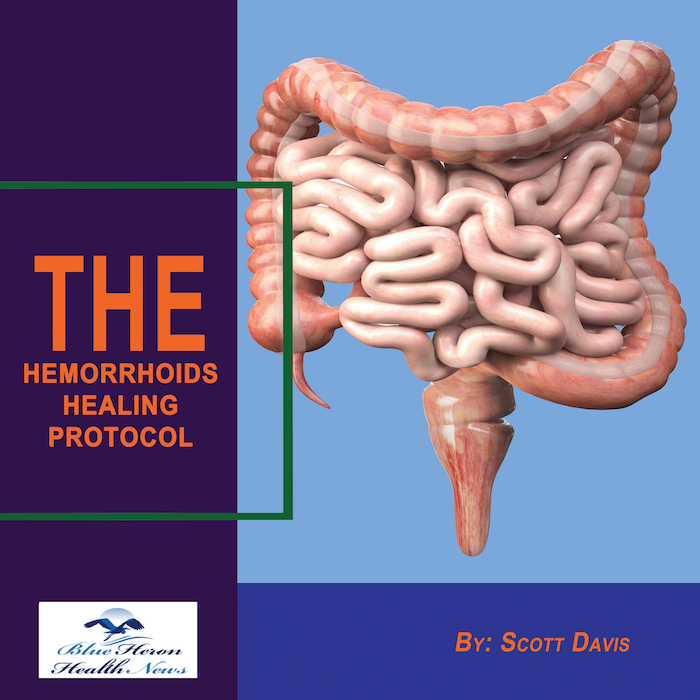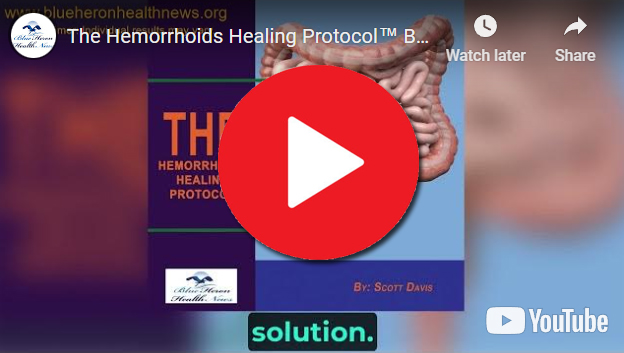
The Hemorrhoids Healing Protocol™ By Scott Davis Hemorrhoid healing protocol is a three-week online program that helps in treating and reducing hemorrhoids. It teaches gentle recipes and movements, natural and effective remedies that help in treating hemorrhoids.This program is not like the usual prescription medicines, it is a hell of a lot more than just those drugs. It focuses more on elevating the two main not so good habits that are connected to the Hemorrhoids. Overall the sole motive of this program is to remove the problem from its root instead of just treating the symptoms.
How are hemorrhoids diagnosed?
Introduction
Hemorrhoids, also known as piles, are a common condition characterized by swollen and inflamed veins in the rectum and anus. While they can cause significant discomfort and inconvenience, they are generally not life-threatening. Proper diagnosis of hemorrhoids is crucial for effective management and treatment. This comprehensive analysis explores the various methods and procedures used to diagnose hemorrhoids, including medical history, physical examination, and diagnostic tests. Understanding these diagnostic processes is essential for both healthcare providers and patients to ensure accurate diagnosis and appropriate treatment.
Medical History and Symptom Assessment
Detailed Medical History
The first step in diagnosing hemorrhoids is taking a thorough medical history. This involves a detailed discussion between the patient and the healthcare provider about the patient’s symptoms, lifestyle, dietary habits, and any underlying medical conditions. Key aspects of the medical history include:
- Symptom Description: Patients are asked to describe their symptoms, including the onset, duration, frequency, and severity. Common symptoms of hemorrhoids include bleeding during bowel movements, pain and discomfort, itching and irritation, swelling, and the presence of lumps around the anus.
- Bowel Habits: Information about bowel habits, including the frequency, consistency, and ease of bowel movements, is important. Patients are also asked about any history of constipation, diarrhea, or straining during bowel movements.
- Diet and Fluid Intake: A detailed account of the patient’s diet, particularly fiber intake, and fluid consumption is necessary. A diet low in fiber and inadequate fluid intake can contribute to constipation and the development of hemorrhoids.
- Lifestyle Factors: Lifestyle factors such as physical activity level, occupation, and any habits that may affect bowel movements, like prolonged sitting or heavy lifting, are assessed.
- Medical and Family History: Any history of gastrointestinal disorders, liver disease, or other conditions that may predispose the patient to hemorrhoids is noted. Family history of hemorrhoids or related conditions is also considered.
Symptom Assessment
Assessing the symptoms is a critical part of the diagnostic process. Healthcare providers will ask specific questions to determine the nature and extent of the symptoms:
- Bleeding: Questions about the presence, frequency, and appearance of blood during bowel movements. It is important to differentiate between bright red blood (suggestive of hemorrhoids) and dark, tarry stools (which may indicate other gastrointestinal issues).
- Pain and Discomfort: Patients are asked to describe the nature and severity of the pain, including its location and any factors that exacerbate or relieve it.
- Itching and Irritation: Information about the presence and severity of itching and irritation around the anus is collected.
- Swelling and Lumps: Patients are asked about any swelling or lumps they have noticed, including their size, consistency, and whether they are painful.
Physical Examination
Visual Inspection
A visual inspection of the anal area is often the first step in the physical examination. This helps the healthcare provider identify external hemorrhoids and other visible abnormalities:
- External Hemorrhoids: These are usually visible as swollen lumps around the anus. They can be soft or firm, depending on whether they are thrombosed (contain a blood clot).
- Skin Tags: Sometimes, skin tags (small flaps of skin) can be mistaken for hemorrhoids. They can occur as a result of stretched skin following the healing of external hemorrhoids.
Digital Rectal Examination (DRE)
A digital rectal examination is a common procedure used to assess internal hemorrhoids and other abnormalities in the rectum:
- Procedure: The healthcare provider inserts a lubricated, gloved finger into the patient’s rectum to feel for any abnormalities, including internal hemorrhoids, lumps, or areas of tenderness.
- Assessment: This examination helps evaluate the tone of the anal sphincter muscles, identify any masses or irregularities, and assess the presence and size of internal hemorrhoids.
Diagnostic Tests
In some cases, additional diagnostic tests may be required to confirm the diagnosis of hemorrhoids and rule out other conditions. These tests include anoscopy, sigmoidoscopy, and colonoscopy.
Anoscopy
Anoscopy is a procedure that involves using a small, lighted tube called an anoscope to examine the lining of the lower rectum and anal canal:
- Procedure: The patient lies on their side, and the anoscope is gently inserted into the anus. The light allows the healthcare provider to visualize the internal hemorrhoids and any other abnormalities.
- Purpose: Anoscopy is particularly useful for identifying internal hemorrhoids and assessing their size, location, and severity. It also helps detect other conditions such as anal fissures, polyps, and infections.
Sigmoidoscopy
Sigmoidoscopy is a diagnostic procedure that uses a flexible tube with a camera, called a sigmoidoscope, to examine the lower part of the colon and rectum:
- Procedure: The patient lies on their side, and the sigmoidoscope is inserted into the rectum. The camera transmits images to a monitor, allowing the healthcare provider to examine the rectum and the lower part of the colon.
- Purpose: Sigmoidoscopy is used to identify internal hemorrhoids, polyps, tumors, and other abnormalities in the lower digestive tract. It is particularly useful when there is a need to investigate bleeding or other symptoms that may not be explained by hemorrhoids alone.
Colonoscopy
Colonoscopy is a more extensive procedure that uses a longer, flexible tube with a camera, called a colonoscope, to examine the entire colon:
- Procedure: The patient is usually sedated, and the colonoscope is inserted into the rectum. The camera transmits images to a monitor, allowing the healthcare provider to examine the entire colon.
- Purpose: Colonoscopy is used to rule out other potential causes of symptoms, such as colorectal cancer, inflammatory bowel disease, and diverticulosis. It is particularly recommended for patients with significant bleeding, unexplained changes in bowel habits, or those over the age of 50.
Differential Diagnosis
It is essential to differentiate hemorrhoids from other conditions that can cause similar symptoms. These conditions include:
- Anal Fissures: Small tears in the lining of the anus that can cause pain, bleeding, and itching. Unlike hemorrhoids, anal fissures typically cause sharp pain during bowel movements.
- Anal Abscesses and Fistulas: Infections in the anal glands can lead to abscesses and fistulas, which can cause pain, swelling, and discharge. These conditions require prompt medical attention.
- Colorectal Polyps and Cancer: Both polyps and colorectal cancer can cause bleeding and changes in bowel habits. It is crucial to rule out these conditions, especially in patients over the age of 50 or those with a family history of colorectal cancer.
- Inflammatory Bowel Disease (IBD): Conditions such as Crohn’s disease and ulcerative colitis can cause inflammation of the digestive tract, leading to symptoms similar to hemorrhoids, including bleeding and discomfort.
- Diverticulosis and Diverticulitis: These conditions involve the formation of small pouches in the colon wall (diverticula) that can become inflamed or infected, causing pain, bleeding, and changes in bowel habits.
Importance of Accurate Diagnosis
Accurate diagnosis of hemorrhoids is crucial for several reasons:
- Appropriate Treatment: Correct diagnosis ensures that the patient receives appropriate treatment tailored to their specific condition. This can include lifestyle and dietary changes, over-the-counter treatments, or medical procedures.
- Prevention of Complications: Early diagnosis and treatment of hemorrhoids can prevent complications such as anemia, strangulated hemorrhoids, and infection.
- Exclusion of Serious Conditions: Ruling out other serious conditions such as colorectal cancer, inflammatory bowel disease, and anal abscesses is essential for patient safety and well-being.
- Patient Education and Awareness: Proper diagnosis allows healthcare providers to educate patients about their condition, including preventive measures and self-care strategies to manage symptoms and prevent recurrence.
Treatment and Management
Lifestyle and Dietary Changes
Making lifestyle and dietary changes is often the first step in managing hemorrhoids:
- High-Fiber Diet: Eating a diet rich in fiber, including fruits, vegetables, whole grains, and legumes, can help soften stools and reduce straining during bowel movements.
- Hydration: Drinking plenty of water and other fluids can help prevent constipation and promote regular bowel movements.
- Regular Exercise: Regular physical activity can help prevent constipation and reduce pressure on the anal veins.
- Avoid Straining: Avoid straining during bowel movements and spending long periods on the toilet.
- Good Hygiene: Keeping the anal area clean and dry can help prevent irritation and infection.
Over-the-Counter Treatments
Several over-the-counter treatments can help relieve the symptoms of hemorrhoids:
- Topical Treatments: Creams, ointments, and suppositories containing hydrocortisone or witch hazel can help reduce pain, itching, and inflammation.
- Pain Relievers: Over-the-counter pain relievers, such as acetaminophen, ibuprofen, or aspirin, can help alleviate pain and discomfort.
- Cold Compresses: Applying cold compresses or ice packs to the affected area can help reduce swelling and pain.
- Sitz Baths: Soaking the anal area in warm water for 10-15 minutes several times a day can help relieve pain and inflammation.
Medical Procedures
For severe or persistent hemorrhoids, medical procedures may be necessary:
- Rubber Band Ligation: A rubber band is placed around the base of the hemorrhoid to cut off its blood supply, causing it to wither and fall off.
- Sclerotherapy: A chemical solution is injected into the hemorrhoid to shrink it.
- Infrared Coagulation (IRC): Infrared light is used to coagulate the blood vessels in the hemorrhoid, causing it to shrink.
- Hemorrhoidectomy: Surgical removal of the hemorrhoid, typically used for severe cases or thrombosed hemorrhoids.
- Stapled Hemorrhoidopexy: A surgical procedure that uses a stapling device to reposition and secure prolapsed hemorrhoids.
Conclusion
Hemorrhoids are a common condition that can cause significant discomfort and pain. Accurate diagnosis is essential for effective management and treatment. The diagnostic process involves taking a thorough medical history, performing a physical examination, and utilizing diagnostic tests such as anoscopy, sigmoidoscopy, and colonoscopy. By understanding the diagnostic procedures and the importance of accurate diagnosis, healthcare providers and patients can work together to manage hemorrhoids effectively and prevent complications. Public awareness and education are crucial for empowering individuals to recognize the symptoms of hemorrhoids and seek appropriate treatment. With proper diagnosis and management, the impact of hemorrhoids on daily life can be minimized, improving overall health and well-being.
The Hemorrhoids Healing Protocol™ By Scott Davis Hemorrhoid healing protocol is a three-week online program that helps in treating and reducing hemorrhoids. It teaches gentle recipes and movements, natural and effective remedies that help in treating hemorrhoids.This program is not like the usual prescription medicines, it is a hell of a lot more than just those drugs. It focuses more on elevating the two main not so good habits that are connected to the Hemorrhoids. Overall the sole motive of this program is to remove the problem from its root instead of just treating the symptoms.
